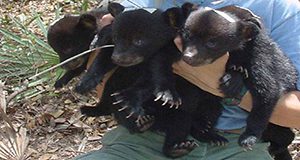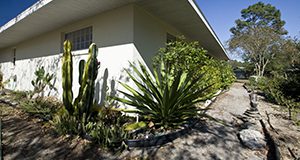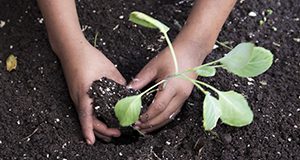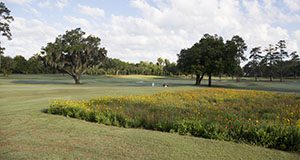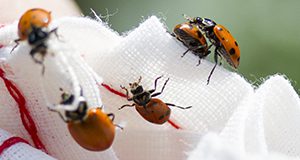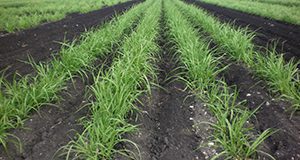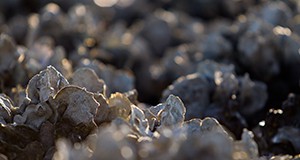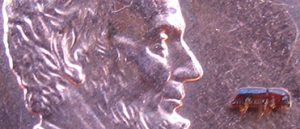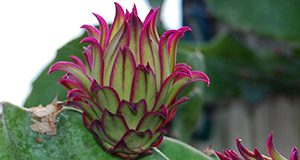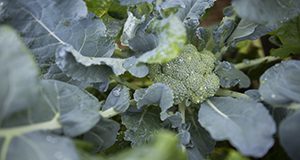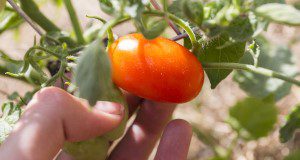The American black bear is beloved, but it is also the most damaging vertebrate pest of honey bee apiaries in North America. That is in part because bears and beekeepers often share the same home territory. Many top beekeeping and pollination states also fall within the range of the American black bear. Can bears and beekeepers live in peace together? This 6-page fact sheet written by Kimberly K. Post and Cameron Jack and published by the UF/IFAS Entomology and Nematology Department details the basic steps for installing an electrified bear fence around a bee yard so that savvy beekeepers can protect hives and honey without harming honey-loving bears.
https://edis.ifas.ufl.edu/in1318
Author: Susan Gildersleeve
Toward Sustainable Urban Landscape Management: Floridians’ Perceptions of Residential Landscapes and Their Maintenance Requirements
This 5-page fact sheet written by Hayk Khachatryan, Alicia Rihn, Xumin Zhang, and Michael Dukes and published by the UF/IFAS Food and Resource Economics Department is the first in a series from the Sustainable Residential Landscape Project, a study conducted in 2016 to address perceptions of landscapes in Florida, different factors that could influence the adoption of more sustainable landscape options, and ways to promote sustainable landscaping options. The Sustainable Residential Landscape Project was funded by the UF/IFAS Center for Landscape Conservation and Ecology (CLCE).
https://edis.ifas.ufl.edu/fe1090
Elderberry and Elderflower (Sambucus spp): Markets, Establishment Costs, and Potential Returns
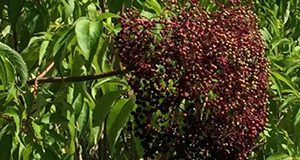
Elderberry is an alternative crop that holds promise for further commercial development in Florida. This 7-page fact sheet written by Kevin Athearn, David Jarnagin, Ali Sarkhosh, Juanita Popenoe, and Steven Sargent and published by the UF/IFAS Food and Resource Economics Department reviews information on markets for elderberries and elderflowers and estimates establishment costs and potential returns for a 3-acre elderberry orchard in Florida. The information is intended to assist farmers in evaluating elderberry as a possible alternative crop. Includes guidance on financial planning for an elderberry enterprise.
https://edis.ifas.ufl.edu/fe1093
Costs and Benefits of Vegetable Gardening
Home vegetable gardening has numerous documented benefits, including savings on the family food bill. How can a gardener calculate cost savings from a garden? Which vegetables cost more to grow in the garden and which cost less? This 10-page fact sheet written by Kevin Athearn, Hannah Wooten, Liz Felter, Catherine G. Campbell, Jessica M. Ryals, Matthew C. Lollar, Juanita Popenoe, Lorna Bravo, LuAnn Duncan, Christa Court, and Wendy Wilber and published by the UF/IFAS Food and Resource Economics Department helps home gardeners estimate the costs and cost savings from vegetable gardening.
https://edis.ifas.ufl.edu/fe1092
The Punky Wood Ambrosia Beetle and Fungus in Florida that Cause Wood Rot: Ambrosiodmus minor and Flavodon subulatus
Ambrosiodmus minor is an invasive ambrosia beetle in the southeastern United States, including Florida. It is considered of low importance because evident economic or ecological impacts have not been observed. However, it is associated with a unique ambrosia fungus, Flavodon subulatus, which causes rapid wood rot. Wood decay caused by this association between Ambrosiodmus and Flavodon is increasing in dead trees across the introduced range, especially in Florida. This 4-page fact sheet written by Demian F. Gomez and Jiri Hulcr and published by the UF/IFAS School of Forest Resources and Conservation offers guidance in identification of the pest, the symptoms of an infestation, and explanation of the insect’s biology. In addition, we provide an updated overview of contemporary management and monitoring of the species.
https://edis.ifas.ufl.edu/fr434
Creating Wildflower Habitats in Golf Course Out-of-Play Areas
Habitat loss from urbanization and agricultural intensification is reducing native bee and monarch butterfly populations, but golf courses in urban areas present an opportunity to mitigate the negative effects of urbanization on pollinators and the environment. It is feasible to enhance a golf course’s ability to support more species and a greater abundance of wildlife by planting the 40% to 70% of acreage not used for the game of golf in wildflowers. With the most golf courses of any US state, Florida is poised to set the stage for golf course environmental stewardship. This 8-page fact sheet written by Rebecca Nestle, Grace Cope, Nicole Benda, and Adam G. Dale and published by the UF/IFAS Entomology and Nematology Department is intended to provide guidelines for Florida golf course superintendents to aid in their efforts to conserve important wildlife while reducing maintenance inputs and associated costs.
https://edis.ifas.ufl.edu/in1316
2021 Guidelines for Purchasing and Using Commercial Natural Enemies and Biopesticides in North America
This 14-page guide written by Lynn M. LeBeck and Norman C. Leppla and published by the UF/IFAS Entomology and Nematology Department provides assistance in selecting, purchasing and using commercially available natural enemies and biopesticides for managing accurately diagnosed pest problems.
https://edis.ifas.ufl.edu/in849
Abundance of Soil Insect Pests in Florida Sugarcane
This 6-page fact sheet written by Ron Cherry, Mabry McCray, Hardev Sandhu, and Michael Karounos and published by the UF/IFAS Entomology and Nematology Department is intended to inform sugarcane growers, scouts, pesticide applicators, and researchers about fluctuations of economically important sugarcane pests and implications for the management of those pests.
https://edis.ifas.ufl.edu/in1313
Insect Management for Onions, Leek, and Garlic
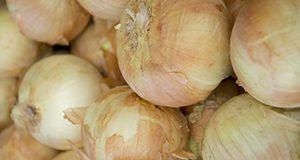
Sweet varieties of bulbing onions, which make bulbs under short day conditions and do not store well, are by far the most common onions grown in Florida. They are generally grown on small acreages in the winter for local and farmers markets. In Hillsborough County and in the Suwannee Valley, strawberry growers are the major producers of onions, many of which are harvested green. This 2-page fact sheet written by Xavier Martini and Susan Webb and published by the UF/IFAS Entomology and Nematology Department reviews the management of the two major onion pests in Florida: thrips and seedcorn maggot.
https://edis.ifas.ufl.edu/ig153
Oyster-Predator Dynamics and Climate Change
Oysters are one of the most important natural resources found in coastal and estuarine areas of Florida, but some Florida oyster populations appear to be declining. One possible driver of oyster population decline is increased mortality from oyster predators, including marine snails. But other environmental factors, such as changes in temperature or salinity, may also affect oysters. This 5-page fact sheet written by Gabrielle Love, Shirley Baker, and Edward V. Camp and published by the UF/IFAS School of Forest Resources and Conservation, Program in Fisheries and Aquatic Sciences describes how a changing climate may affect oysters directly but also indirectly by affecting their predators.
https://edis.ifas.ufl.edu/fa228
Pollination of Cucurbita spp. (Squash and Pumpkin) Crops in Florida
Squash and pumpkin (Cucurbita spp.) are economically significant crops in Florida with over 7,900 acres in production and an estimated value of $35,412,000. Without insect pollination, however, crop yields for zucchini, crookneck, spaghetti, butternut and the rest of the large and delectable crew of squash and pumpkin species grown in Florida would be low to nonexistent. This 7-page fact sheet written by Rachel E. Mallinger and Oscar E. Liburd and published by the UF/IFAS Entomology and Nematology Department explains the pollination biology and requirements for squash and pumpkin, describes the signs and causes of poor pollination, and provides recommendations for improving pollination of these crops in Florida.
https://edis.ifas.ufl.edu/in1311
Galling Damage to Woody Ornamentals: Diagnosis and Potential Causes
Galling or witch's broom damage on the newly expanding buds and leaves of woody ornamental plants has become increasingly common. Diagnosing this damage can be difficult because the most common causes are obscure or occur well before damage symptoms appear. This 6-page fact sheet written by Adam Dale, Erin Harlow, Carrie Harmon, and Chris Marble and published by the UF/IFAS Entomology and Nematology Department is intended to help landscape managers, nursery growers, and pest control professionals diagnose characteristic galling damage, mitigate damage that occurs, and, when possible, prevent it from occurring.
https://edis.ifas.ufl.edu/in1310
Spatial Measurements on USGS Topo Maps

United States Geological Survey topographic maps provide a variety of geospatial measurement tools thanks to their built-in georeferencing capabilities. Georeferencing facilitates display of geographic coordinates and measurement of distances, perimeters, and areas on PDFs using the measure tools built into Adobe Reader and Adobe Acrobat. This 7-page fact sheet written by Hartwig H. Hochmair and published by the UF/IFAS School of Forest Resources and Conservation explains and showcases the use of these geospatial readout functions. It also provides background information about and assistance with estimating point coordinates on the Universal Transverse Mercator grid cast on USGS topographic maps as an optional layer.
https://edis.ifas.ufl.edu/fr433
Citrus Pest Quick Guide: Ambrosia Beetles (broadly used common name)
A one-page quick guide written by Lauren M. Diepenbrock and Jamie D. Burrow and published by the Entomology and Nematology Department presents the life cycle of the ambrosia beetle and provides several photos of the pest and the damage it causes to assist in identification.
https://edis.ifas.ufl.edu/in1283
An Introduction to USGS Topo Maps
Topographic maps provide both a detailed and accurate representation of cultural and natural features on the ground and a quantitative representation of relief, usually using contour lines. They can be used to address spatial questions in disciplines related to natural resources, hydrology, forestry, agriculture, or ecology. In 1879, the United States Geological Survey began to map the topography of the United States, producing new map versions of each area at semi-regular time intervals. US Topo maps are the current generation of USGS topographic maps. Unlike traditional topographic maps, the US Topo product is automatically generated from national map databases with topographic maps and produced every three years for all 48 of the contiguous United States, Hawaii, and the United States territories. They are published as freely available geospatial PDF documents that facilitate coordinate readings and spatial measurements (e.g. distance, area) through built-in georeferencing technology. This 7-page fact sheet written by Hartwig H. Hochmair and Adam R. Benjamin and published by the UF/IFAS School of Forest Resources and Conservation focuses on US Topo quadrangle download procedures and layer structure.
https://edis.ifas.ufl.edu/fr342
Pitaya (Dragon Fruit) (Hylocereus undatus) Pests and Beneficial Insects
Pitaya or dragon fruit is a recent crop in south Florida. Dragon fruit has grown rapidly and shows a good potential for commercialization. This 13-page fact sheet written by Daniel Carriollo, Rita Duncan, and Jorge E. Peña and published by the Entomology and Nematology Department lists some of the pests and beneficial insects associated with this promising fruit crop and includes a section on control, precautions, and restrictions.
https://edis.ifas.ufl.edu/in1292
Minimizing Honey Bee Exposure to Pesticides
To safely solve a pest problem, growers and pesticide applicators must be aware of the potential impacts of some pest-control strategies on bees, other pollinators, and beneficial arthropods. This 14-page fact sheet written by J. D. Ellis, J. Klopchin, E. Buss, and others and published by the UF/IFAS Entomology and Nematology Department explains the issue and provides strategies to protect honey bees and other beneficial insects from pesticides.
https://edis.ifas.ufl.edu/in1027
Nematode Management in Cole Crops
Many different plant-parasitic nematodes cause yield loss in cabbage, broccoli, collards, and other valuable Florida cole crops. This 13-page fact sheet written by Z. J. Grabau and J. W. Noling and published by the UF/IFAS Entomology and Nematology Department lists common symptoms, explains how to submit samples to a nematology lab such as the UF Nematode Assay Lab for diagnosis, and describes key cultural practices to help agricultural professionals spot and manage nematode problems in cole crops.
https://edis.ifas.ufl.edu/ng024
Potential Economic Benefits of Restoring Commercial Oyster Harvest Levels in Apalachicola Bay, Florida
Florida’s Apalachicola Bay has long been known for its oyster harvesting and processing industry, but a steady decline in oyster landings in the Bay has threatened the industry. The complex nature of the human and natural systems that together affect Apalachicola’s oyster reefs has created uncertainty about the long-term sustainability of the oyster fishing industry in Franklin County, which has prompted many questions about the ecology of the Bay and the economy of the region from a variety of stakeholders that directly or indirectly depend on the survival and successful restoration of the Apalachicola Bay oyster fishery. This 5-page fact sheet estimates the potential economic impacts associated with a successfully restored oyster reef in Apalachicola Bay, basing estimates on different hypothetical oyster harvest goals. Written by Robert Botta, Ed Camp, Christa Court, Caleb Stair, and Charles Adams and published by the UF/IFAS Food and Resource Economics Department, it is designed to inform decision making and discussions related to restoration and resource management in the region.
https://edis.ifas.ufl.edu/fe1085
Constructing a Southwest Florida Tomato Enterprise Budget
Enterprise budgets are effective planning tools for growers in search of help with forecasting, resource coordination, and better production decisions. In essence, enterprise budgets can help producers determine what to produce, how many acres to produce, the cost of production, and the necessary price to be profitable. This 5-page fact sheet written by Tara Wade, Barbara Hyman, Eugene McAvoy, and John VanSickle and published by the UF/IFAS Food and Resource Economics Department describes the process used to create the 2017/18 enterprise budget for tomatoes in southwest Florida and includes resources for producers interested in creating enterprise budgets for their own operations.
https://edis.ifas.ufl.edu/fe1087
